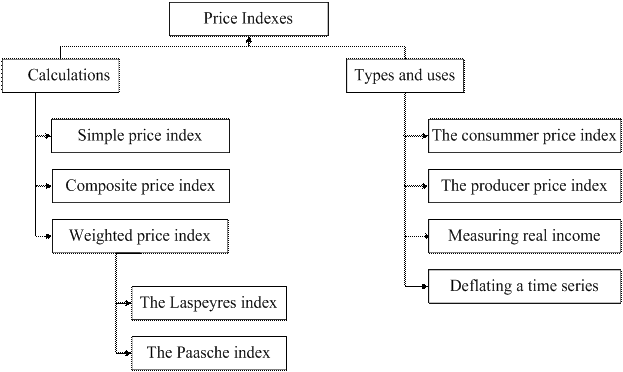097. Index numbers. Introduction
Analysts of business and economic data find many uses for price indexes. Many facts and conditions can be discovered only through the application of index numbers to data bases containing economic variables. This chapter examines how index numbers are used in the analysis of business problems (Figure 9.1).

Figure 9.1 – Chapter 11 Structure
Business and economic conditions tend to fluctuate widely over time. These vacilations make it difficult to analyze essential business data or to properly interpret economic variables. Comparisons from one time period to the next often become misleading.
The use of index numbers can alleviate many of these problems. Decision makers obtain a more accurate picture of the behavior of economic variables and the relationships that exist among these variables. An index number relates a value in one time period, called the Base period, to another value in a different time period, called the Reference (or Current) Period. The use of index numbers has become prevalent within our business and economic communities over the last several years.
Index numbers are important to many private business decisions, and are crucial in measuring the impact of many government socioeconomic programs. The description of the role of index numbers covers
3. Simple price index.
4. Composite price index.
5. Weighted price indexes:
– The Laspeyres index.
– The Paasche index.
6. Relative indexes.
7. The base period and how to change it.
8. Specific indexes such as the consumer price index (CPI).
| < Предыдущая | Следующая > |
|---|